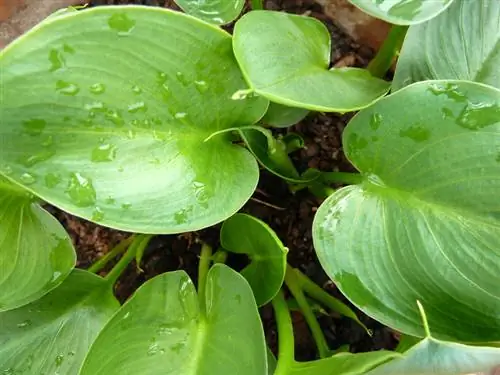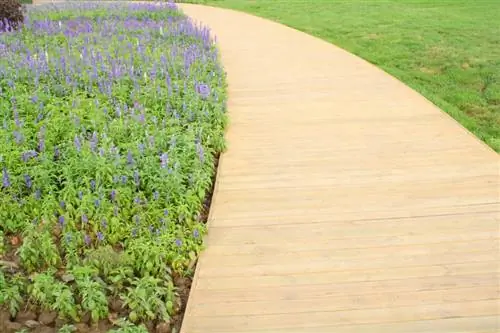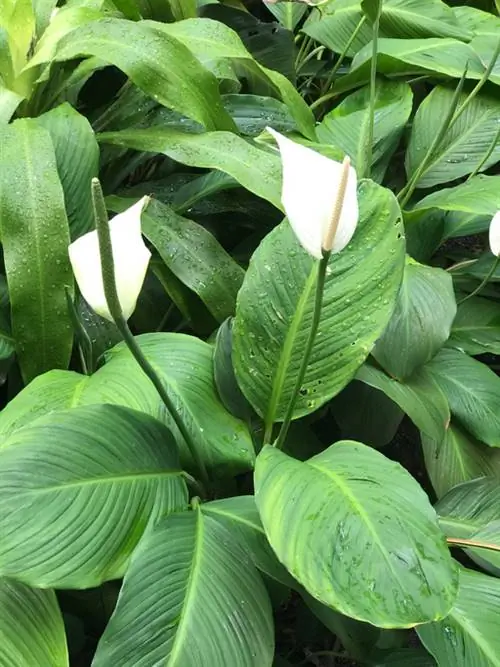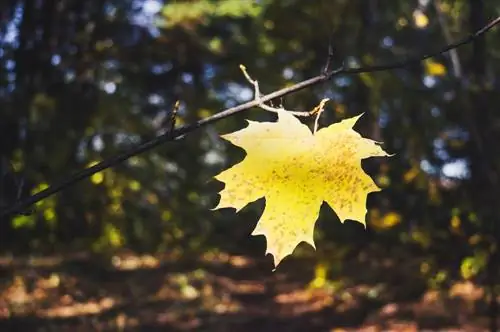- Author admin [email protected].
- Public 2023-12-16 16:46.
- Last modified 2025-01-23 11:20.
The calla is one of the most popular flowering plants in the flower window, not just because of its elegant flowers. The mostly green leaves also look very decorative. Only a few calla varieties are evergreen, most lose their leaves during dormancy.
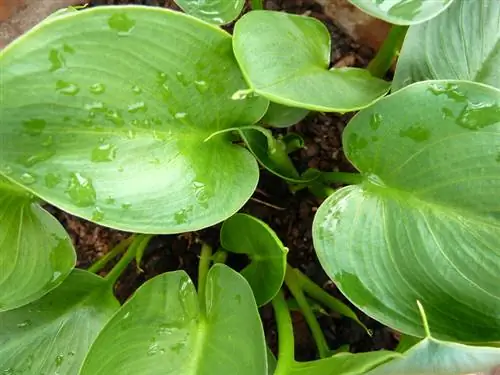
Why do calla leaves change color prematurely?
Premature discoloration of the calla leaves can be due to care errors, poor location, substrate that is too dry, lack of nutrients, pest infestation or diseases caused by contaminated soil. To resolve the problem, the care conditions and soil should be checked.
Appearance of leaves
The indoor calla enchants the flower window not only with its beautiful flowers, but also with its leaves growing on long stems.
On a he althy plant during the growing season, the leaves have a strong green color and are shiny.
The leaf shape can be in the shape of a lance or an arrow.
After flowering, the leaves turn yellow
The leaves of most calla varieties turn yellow after flowering. They begin to curl up and retract themselves.
This is not a cause for concern, but a completely normal occurrence.
The leaves must not be cut before the rest period. They provide the calla tuber with nutrients. You should only cut leaves that change color prematurely or are affected by pests immediately.
When the leaves change color prematurely
If the leaves turn brown or yellow before and during flowering, this indicates that the houseplant is not doing well.
Causes for premature leaf discoloration can be:
- Care errors
- Bad location
- Substrate too dry
- Too few nutrients
- Pest Infestation
- Diseases caused by contaminated soil
Avoid care errors
Incorrect care is almost always responsible for the leaves changing color prematurely. Maybe the plant is too dark or gets direct sunlight behind the glass. Place the calla in a bright location where it does not get midday sun.
During the growing season, the calla needs a lot of moisture. As soon as the soil becomes too dry, the leaves react to it. Pests and viral diseases primarily cause problems for already weakened plants.
When planting or repotting, always only use very fresh soil (€6.00 on Amazon) so that you do not transfer any bacteria or fungal spores to the plant.
Tips & Tricks
The leaves of the indoor calla, like all other parts of the plant, are slightly poisonous. They also secrete a poisonous plant sap. Make sure children and pets do not come into contact with it.

